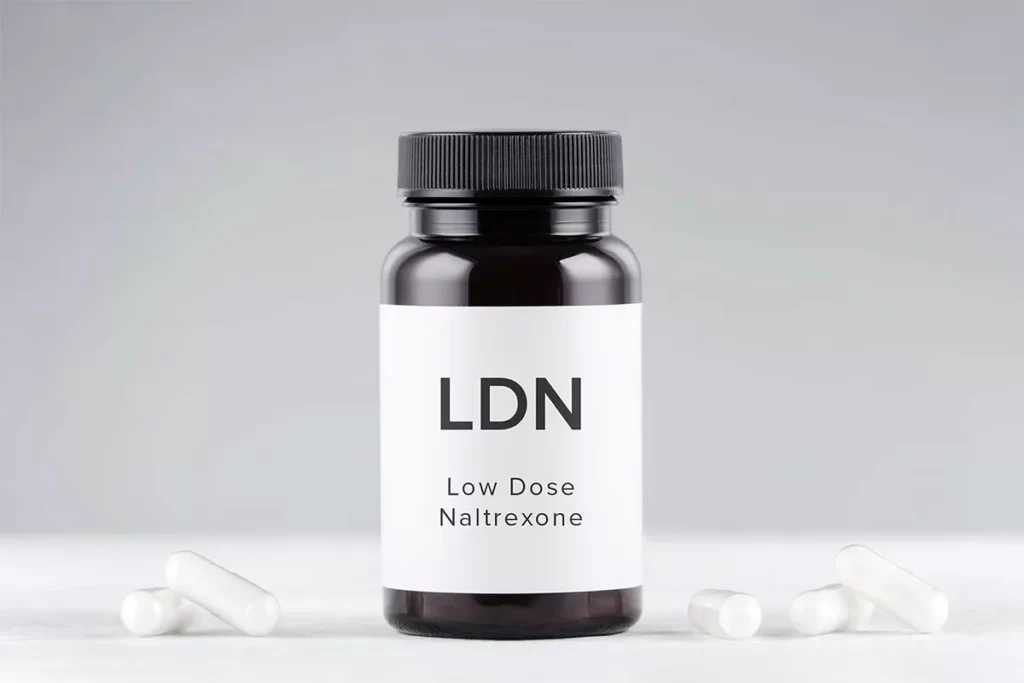Metabolic Confusion Meal Plans - The Key to Lean Gains
-
 Written by
Michael J. Ormsbee
Written by
Michael J. Ormsbee
- LAST UPDATED September 20, 2023
Metabolic confusion meal plans have been growing in popularity as a way to boost fat-burning and muscle growth. This diet strategy aims to manipulate calorie and macronutrient intake in order to prevent metabolic adaptation and keep the body guessing. By fluctuating nutritional intake, metabolic confusion techniques can provide an exciting way to break through plateaus and rev up your metabolism. In this comprehensive guide, we will explore everything you need to know about designing and implementing an effective metabolic confusion meal plan.
What is a Metabolic Confusion Meal Plan?
The term “metabolic confusion” refers to the practice of varying caloric and macronutrient intake in order to prevent the body and metabolism from adapting. This confusion keeps the body guessing and responding optimally. The basic premise behind metabolic confusion meal plans is that eating the same foods, nutrients, and calories day after day can cause the metabolism to adapt and plateau. The body becomes highly efficient at processing those familiar foods and intake levels, leading to slower fat-burning and muscle growth over time.
By constantly fluctuating nutritional intake, metabolic confusion techniques aim to keep the metabolism flexible and responsive. This prevents the dreaded weight loss plateau, kickstarts additional fat burning, and enables continued muscle growth when paired with proper training. Some of the most common ways that metabolic confusion meal plans trick the metabolism include:
- Varying daily calories through high and low-calorie days
- Fluctuating macronutrient ratios with high-carb, low-carb, and high-protein days
- Changing meal frequency and timing through grazing versus structured meals
- Rotating between ketogenic low-carb and higher-carb days
- Periods of intermittent fasting contrasted with normal eating windows
Essentially, the more you can keep your body guessing from day to day, the better metabolic confusion can work. ThisManipulating these nutritional factors prevents the body and metabolism from finding a comfortable equilibrium. The constant fluctuations force continued adaptations and enhanced metabolic flexibility.
Research indicates that avoiding metabolic adaptation through diet cycling in this way can increase fat oxidation and spare muscle when cutting. One study found that varying caloric intake from 750 calories up to 3150 calories in a zig-zag pattern increased fat loss and maintained lean mass compared to a fixed caloric deficit. The metabolic confusion from the calorie cycling prevented the normal metabolic slowdown that accompanies continuous dieting. Other studies show carb cycling enhances fat loss as well, especially in combination with calorie cycling.

Additionally, proper implementation of metabolic confusion techniques makes it easier to consistently stay in a caloric deficit. The high-calorie refeed days help restore leptin levels, boost metabolism, and prevent the weight loss plateaus that often occur with extended dieting. This makes metabolic confusion plans highly appealing for breaking through fat loss stagnation. The overall metabolic flexibility created reduces the adaptive response to caloric restriction for better long-term weight management.
When it comes to building muscle, metabolic confusion combines well with periodized, cycled training programs. Just as you vary reps, sets, intensity, and volume through training phases, fluctuating nutritional intake keeps your metabolism on its toes. This allows you to stay in an optimal calorie surplus for maximizing muscle growth without overdoing it and adding excess fat. Like with fat loss, metabolic adaptability makes it easier to consistently meet your caloric needs for gains.
Now that we understand the compelling scientific rationale behind metabolic confusion meal plans, let’s explore how to design an effective plan.
How Metabolic Confusion Meal Plans Work
To start designing your own metabolic confusion meal plan, it helps to understand exactly how manipulating your diet can trick your metabolism. Here are some of the primary ways that metabolic confusion encourages greater fat-burning and muscle growth:
Fluctuating Calories
One of the cornerstones of metabolic confusion is varying your overall caloric intake through high days and low days. On high days, you eat at a caloric surplus to boost leptin, lift metabolism, and replenish glycogen stores. Low days feature a caloric deficit to spur fat burning. This constant shifting of total calories keeps your body guessing and responding.
A typical approach is to have 2 high days each week and 5 low days on a cutting plan. The specific calorie amounts depend on your maintenance level and goals. For example, you might alternate between 2800 calories on some days and 1700 calories on a cut. Or cycle between 3500 calories on high days and 2500 on low days during a lean bulk.
The amplitude of the fluctuations produces greater metabolic confusion. Studies show that cycling calories by +/- 20-30% boosts fat loss versus a fixed deficit. This enhanced calorie variability provides a bigger disruption. The wide swings make it nearly impossible for your body to adapt.
Macronutrient Cycling
In addition to overall calories, metabolic confusion meal plans vary the ratio of carbs, protein, and fats. Nutrient cycling provides another layer of confusion by disrupting macronutrient balance.
Some effective approaches include:
- Low carb days (under 50g) followed by high carb days (over 150g)
- High protein days (1.5g/lb+) contrasted with lower protein days (0.5g/lb)
- Ketogenic low-carb days alternating with high-carb refeeds
- Fat cycling from very high (70% cals) to low (20% cals) amounts
Mixing up your macros changes demands on the metabolic pathways that process carbs, protein, and fat. This forces continued adaptations to utilize different fuel sources. Like with calorie cycling, bigger fluctuations in macronutrient ratios enhance the benefits.
Meal Timing and Frequency
In addition to what you eat, when and how often you eat also impacts metabolic processes. Metabolic confusion meal plans can manipulate these factors as well to keep your body adapting.
For example, you might alternate between:
- 3 bigger meals each day and 5-6 smaller meals
- Normal eating window and compressed feeding window
- Fasting days / skipping meals and feasting days
Changing meal frequency stresses digestive processes. Meanwhile, shifting feeding windows elicits a metabolic response. Your body cannot get comfortable with any pattern, enhancing the confusion factor.
Food Selection
While calorie and macro cycling account for the majority of metabolic confusion, adjusting food selection provides benefits as well. Emphasize nutrient-dense, minimally processed whole foods. Then cycle through different types of foods in these categories:
- Starchy carbs and fibrous carbs
- Lean proteins, fatty proteins, and plant proteins
- Saturated fats, monounsaturated fats, and polyunsaturated fats
- Different fruits and vegetables
Varying whole foods stresses digestion and absorption processes in a positive way. It ensures you get a diverse range of vitamins, minerals, and phytonutrients as well. The goal is to avoid eating the exact same foods continuously.
Exercise Selection and Schedule
Your workout routine ties directly into the metabolic confusion equation. Align your training variables with your nutritional fluctuations for maximum benefits. Some examples include:
- Pairing low-carb days with high-intensity cardio-focused workouts
- Having high-carb days revolve around heavy, lower-rep weight training
- Shifting between higher volume hypertrophy blocks and lower volume strength/power blocks every 2-3 weeks
Coordinating your workouts with your meal plan multiplies metabolic stress. This one-two punch makes it nearly impossible for your body to find homeostasis. The synergy between periodized exercise and periodized nutrition optimizes the confusion factor.

Sample Metabolic Confusion Meal Plan
Now that we understand the core tenets of metabolic confusion meal plans, let’s walk through a sample weekly plan. This will provide a concrete example of how calorie, macro, and meal timing cycling works.
We will base this sample on a 175-pound lifter aiming for fat loss on a moderate carb cycling plan. The calorie cycling has 2 high days at 2800 calories, 2 medium days at 2100 calories, and 3 low days at 1600 calories. Protein is held steady each day at 1 gram per pound of body weight (175g). Fat intake ranges from 70-100g depending on rest or training days. This provides a solid metabolic confusion template.
Here are the details:
Monday (High Day)
Total calories: 2800
Carbs: 250g
Protein: 175g
Fat: 70g
Meals:
- Breakfast: Omelette with cheese, onions, mushrooms, peppers. Oatmeal with berries and pecans.
- Lunch: Chicken breast, sweet potato, broccoli
- Pre-Workout Snack: Whey protein shake with banana, peanut butter
- Dinner: Burrito bowl with rice, beans, chicken, salsa, cheese
- Evening Snack: Protein muffin, Greek yogurt with granola
Tuesday (Medium Day)
Total calories: 2100
Carbs: 150g
Protein: 175g
Fat: 80g
Meals:
- Breakfast: Protein pancakes with Greek yogurt, blueberries
- Lunch: Turkey burger with sweet potato fries
- Dinner: Salmon, quinoa, asparagus
- Snacks: Cottage cheese, protein bar, mixed nuts
Wednesday (Low Day)
Total calories: 1600
Carbs: 100g
Protein: 175g
Fat: 50g
Meals:
- Breakfast: Egg white omelet with spinach, turkey, avocado
- Lunch: Grilled chicken salad with chickpeas and vinaigrette
- Dinner: Steak and broccoli with sweet potato
- Snack: Whey protein shake
Thursday (High Day)
Total calories: 2800
Carbs: 300g
Protein: 175g
Fat: 80g
Meals:
- Breakfast: Pancakes with berries, maple syrup, bacon
- Lunch: Chicken fried rice with mixed veggies
- Pre-workout Snack: Banana with whey protein
- Dinner: Pasta with meatballs and marinara sauce
- Evening Snack: Protein mug cake, chocolate milk
Friday (Medium Day)
Total calories: 2100
Carbs: 120g
Protein: 175g
Fat: 100g
Meals:
- Breakfast: Veggie omelet with cheese, avocado
- Lunch: Tuna salad stuffed in tomatoes
- Dinner: Meatballs with zucchini noodles and marinara
- Snacks: Jerky, mixed nuts, protein muffin
Saturday (Low Day)
Total calories: 1600
Carbs: 50g
Protein: 175g
Fat: 100g
Meals:
- Breakfast: Bacon, eggs, mushrooms
- Lunch: Bunless turkey burger with side salad
- Dinner: Grilled chicken thighs, cauliflower rice
- Snack: String cheese, pepperoni
Sunday (Low Day)
Total calories: 1600
Carbs: 75g
Protein: 175g
Fat: 90g
Meals:
- Brunch: Veggie omelet with turkey, avocado, and black beans
- Dinner: Steak fajitas with peppers and onions, avocado
- Snack: Whey protein shake, celery with peanut butter
This sample layout provides an excellent metabolic confusion structure. Calories and carbs flux significantly from day to day. High and low-carb days ensure glycogen manipulation. Meal frequency also shifts between 3 main meals on some days and additional snacks on others. This meal plan will keep the metabolism guessing and adapting week after week.
Foods to Eat on Metabolic Confusion Meal Plan
To execute a metabolic confusion diet successfully, focus on incorporating high-quality, nutritious whole foods into your meal plan. Emphasize the following categories:

Lean Proteins
Prioritize lean, low-fat protein sources as the foundation of your diet. Examples include:
- Chicken breast
- Turkey breast
- Lean red meat cuts like sirloin or 93/7 ground beef
- White fish like cod, halibut, tilapia
- Shellfish like shrimp, scallops, crab
- Egg whites
- Greek yogurt
- Cottage cheese
- Protein powders like whey and casein
Lean proteins provide essential amino acids to repair and build muscle without excess calories or fat. Get a minimum of 0.7 grams per pound of body weight daily. On high protein days, increase intake to 1.5 grams per pound or more. Fluctuate your protein sources to promote metabolic confusion.
Healthy Fats
Incorporate a moderate amount of healthy fats each day. Great options include:
- Avocados
- Nuts like almonds, walnuts, pecans
- Nut butters
- Seeds like chia, pumpkin, sunflower
- Olive oil, avocado oil, nut oils
- Coconut oil, ghee, grass-fed butter
- Full fat dairy like cheese, Greek yogurt
- Fatty fish like salmon, mackerel
Fats help regulate hormones, control inflammation, and provide sustained energy. Cycle between days with 50-70% of calories from fat and days with just 20-30% from fat sources for optimal confusion.
Low Glycemic Carbs
Focus your carb intake on fibrous, low glycemic sources like:
- Vegetables: broccoli, spinach, kale, carrots, peppers, mushrooms etc.
- Legumes: lentils, beans, peas
- Starchy carbs: sweet potatoes, potatoes, oats, brown rice, quinoa
- Fruit: berries, apples, pears, citrus fruits
- Ancient grains: amaranth, buckwheat, farro
Low glycemic carbs provide nutrients and fuel while minimizing blood sugar spikes. Mix starchy carbs and fibrous veggies for balanced nutrition. Cycle between higher carb days with 300+ grams and lower carb days under 100 grams.
Nutrient Dense Foods
Emphasize foods packed with vitamins, minerals, antioxidants, and phytonutrients:
- All fruits and vegetables
- Herbs, spices, teas
- Beans, lentils, legumes
- Nuts, seeds
- Whole grains
- Wild, fatty fish
- Grass-fed meat, pasture-raised eggs
- Ancient grains
Eating a diversity of superfoods enhances health and provides a variety of nutrients. This complements the metabolic confusion process.
Minimally Processed Foods
Focus on whole, minimally processed foods as much as possible:
- Single-ingredient foods: eggs, chicken breast, apples
- Frozen or flash-frozen produce
- Simple preparations: baked, grilled, roasted
- Homemade meals with natural ingredients
Avoid overly processed items with long ingredient lists. Stick to foods close to their natural state. Heavily processed products can disrupt hormonal function and metabolism.
Clean Meal Timing
In addition to food quality, when you eat matters. Stick to a consistent meal schedule with 12-14 hours daily between your first and last meal. This encourages circadian rhythm alignment. Focus on 3-6 balanced meals spaced 3-5 hours apart. Avoid grazing late at night. Prioritize proper meal spacing for optimal digestion and assimilation.
Avoid Metabolic Disruptors
Certain products directly clash with metabolic health. Eliminate these from a metabolic confusion diet:
- Added sugars – soda, candy, baked goods
- Refined grains – white bread, crackers, cereals
- Fried foods
- Fast food
- Artificial trans fats
- Excess alcohol
These processed and fried items spike insulin, promote inflammation, and impair metabolic function. Stick to whole foods and natural ingredients as the basis of your meal plan.
Benefits of Metabolic Confusion Meal Plans
When properly designed and implemented, metabolic confusion meal plans provide impressive benefits for both fat loss and muscle growth. Here are some of the top advantages of this cycling approach:
Breaks Through Fat Loss Plateaus
One of the most frustrating challenges with long-term dieting is the weight loss plateau. After several months of fat loss, progress stalls as the body adapts to the caloric deficit. The metabolic rate slows, making continued steady fat burning tougher and tougher.
Metabolic confusion counters this adaptive response. The calorie, macro, and meal timing fluctuations constantly keep your body adjusting. This prevents the metabolic adaptation and hormonal shifts that lead to plateaus. Studies confirm that subjects following cycled diets continued losing fat steadily after fixed deficit diets stalled out.
Metabolic confusion meal plans enable fat loss sustainability. The high-calorie refeed days enhance leptin levels, thyroid output, and energy balance for ongoing fat burning. This strategy reboots your metabolism to break past points where regular diets fail.
Preserves Lean Mass When Cutting
Most fat-loss diets lead to some loss of lean muscle tissue along with body fat. Lower caloric intake, decreased protein synthesis, and hormonal changes while cutting compromise muscle growth. This muscle loss then slows your metabolism further.
However, research shows metabolic confusion meal plans help preserve lean mass even in a caloric deficit. The protein cycling provides days of higher intake for increased MPS. Calorie cycling allows periodic energy surpluses to support training intensity. This spares muscle loss while still spurring fat oxidation. Less muscle loss during dieting enables better fat-burning momentum long term.

Makes Bulking More Efficient
For those looking to bulk up and build muscle, metabolic confusion enhances the process. It allows you to remain in a mild calorie surplus without excessive weight gain. The calorie and macro cycling prevents dramatic insulin spikes that lead to greater fat storage.
Metabolic flexibility makes your body more adept at nutrient partitioning. More calories get shuttled towards adding muscle mass rather than body fat. This lean bulking effect helps you gain strength and size efficiently. Cycling also helps restore insulin sensitivity which encourages more nutrients into muscle cells.
In addition, the periodic drops in calories, carbs, and fats help control body fat levels during a bulk. This prevents the need to do extreme cuts after adding too much fat, which can compromise gains. The improved body composition from metabolic confusion bulking enhances both health and aesthetics.
Boosts Metabolic Rate
As described earlier, regular extended dieting or overfeeding causes adaptive thermogenesis. This metabolic slowdown hinders fat loss and muscle growth. Studies confirm cycling calories and macros avoids this issue.
The constant dietary fluctuations prevent metabolic rate decreases. Your body cannot downregulate energy expenditure when calories and nutrients swing so drastically. The high days boost metabolism, while the low days spur fat burning.

FAQs about Metabolic Confusion Meal Plan
What is the best metabolic confusion meal plan?
The best metabolic confusion meal plan is individualized, based on each person's maintenance calorie level, lifestyle, and health and fitness goals. However, a typical approach could involve having two high-calorie days each week, interspersed with five low-calorie days, often useful in a cutting phase. High-calorie days may involve consuming 2800 to 3500 calories, and low days can range between 1700 to 2500 calories. Coupling this eating strategy with regular exercise can enhance results. It's recommended to consult with a nutritionist or healthcare professional to formulate a plan that best suits your needs.
How do you eat to create metabolic confusion meal plan?
Creating a metabolic confusion meal plan involves varying your caloric intake with high and low-calorie days. On high-calorie days, consume more calories than your typical intake. This could be achieved by eating larger or more calorie-dense meals and snacks. On low-calorie days, restrict caloric intake by eating smaller portions and choosing low-calorie foods. It's crucial to maintain a balanced diet, full of protein, healthy fats, and good carbohydrates. Remember to keep hydrated by drinking plenty of water.
How many carbs should I eat a day for metabolic confusion meal plan?
Carbohydrate intake in a metabolic confusion meal plan diet depends on your calorie goals and activity level. On high-calorie days, a greater portion of your calories may come from carbs, while on low-calorie days, carb intake might be reduced. A general guideline might be to consume about 45%-65% of your total daily calories from carbs, depending on your overall calorie intake. This means on a 2800-calorie high day, you could aim for about 315-455 grams of carbs, while on a 1700-calorie low day, you could aim for about 190-275 grams of carbs.
How to lose weight with a metabolic confusion meal plan?
Losing weight with metabolic confusion centers on the strategic alternation of high and low-calorie days. This approach keeps your metabolic rate high by preventing your body from adjusting to a standard caloric intake. The low-calorie days create a deficit that can stimulate fat loss, while the high-calorie days encourage the metabolic rate to remain active, aiding in weight loss. Combining this dietary approach with regular physical activity can enhance results. Remember, it's important to consume nutrient-dense food to meet your dietary requirements, even on low-calorie days. Always consult with a healthcare professional before starting any new diet plan.






